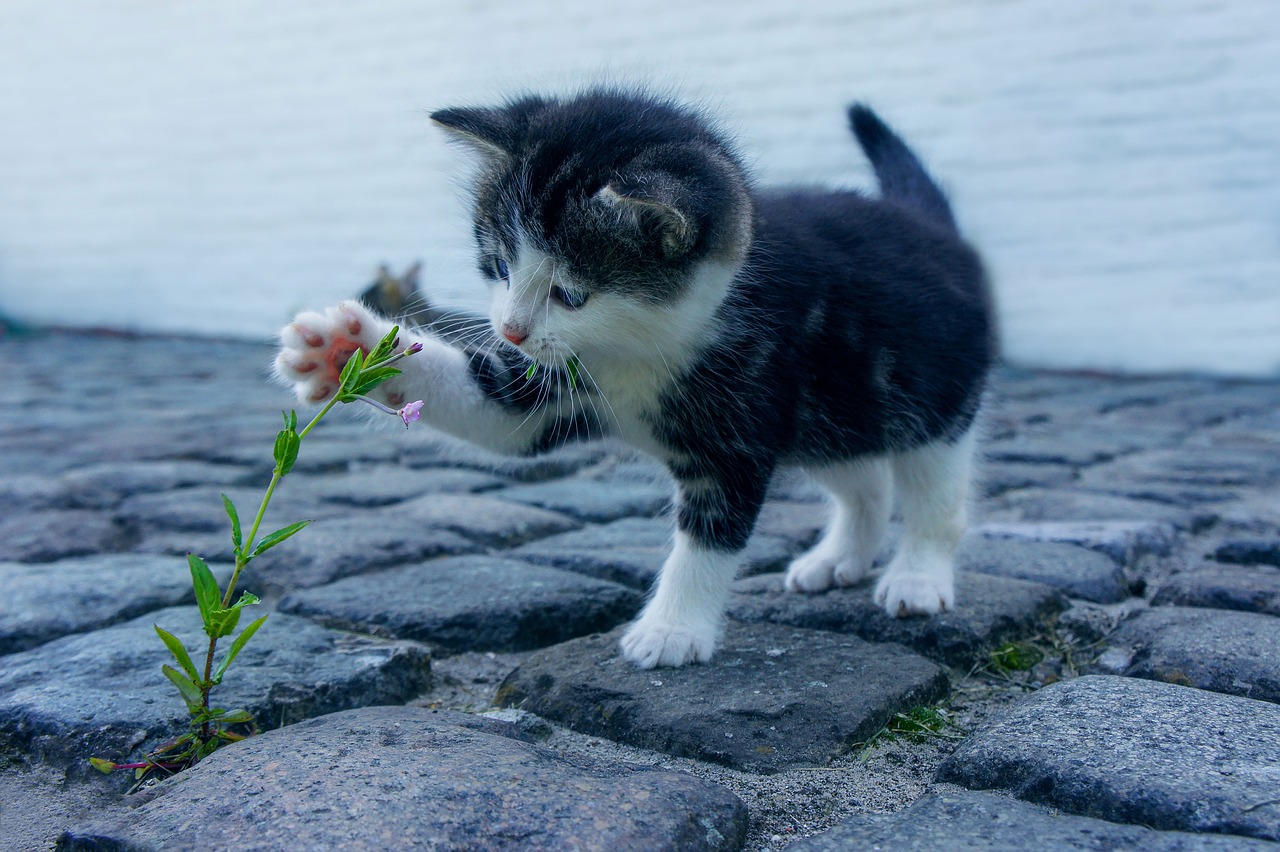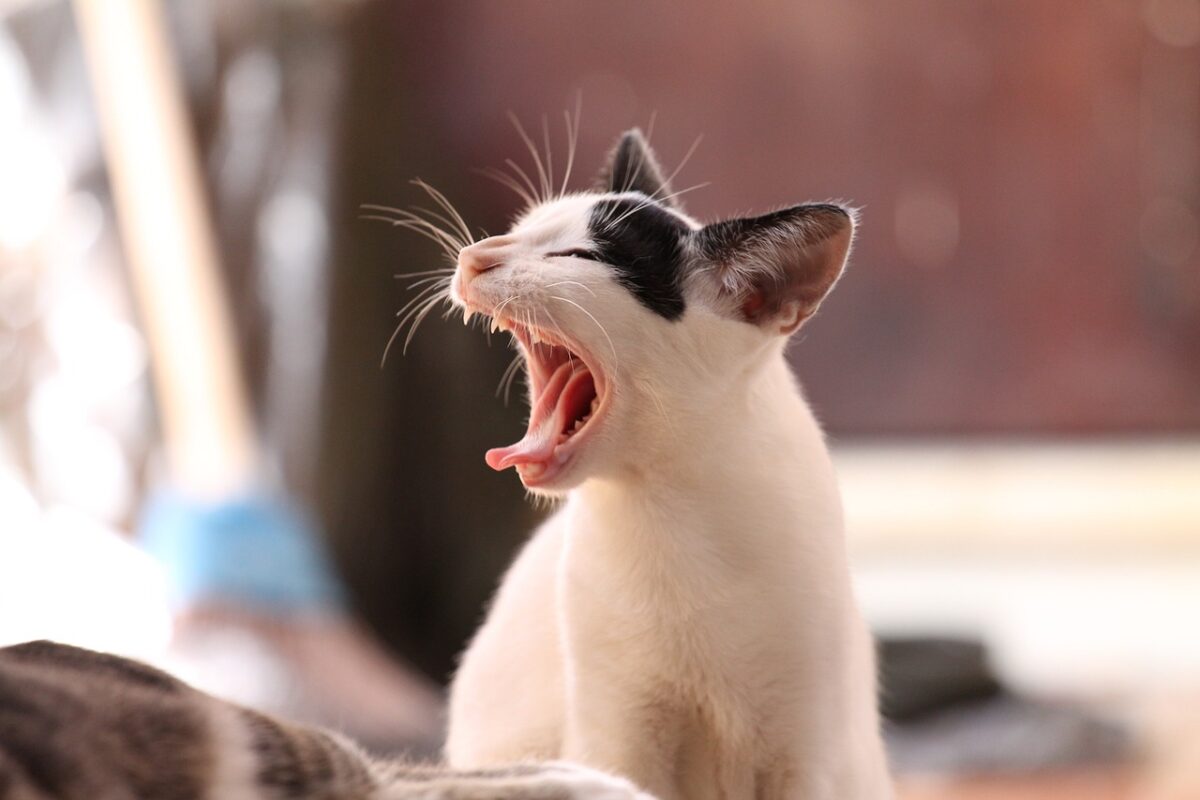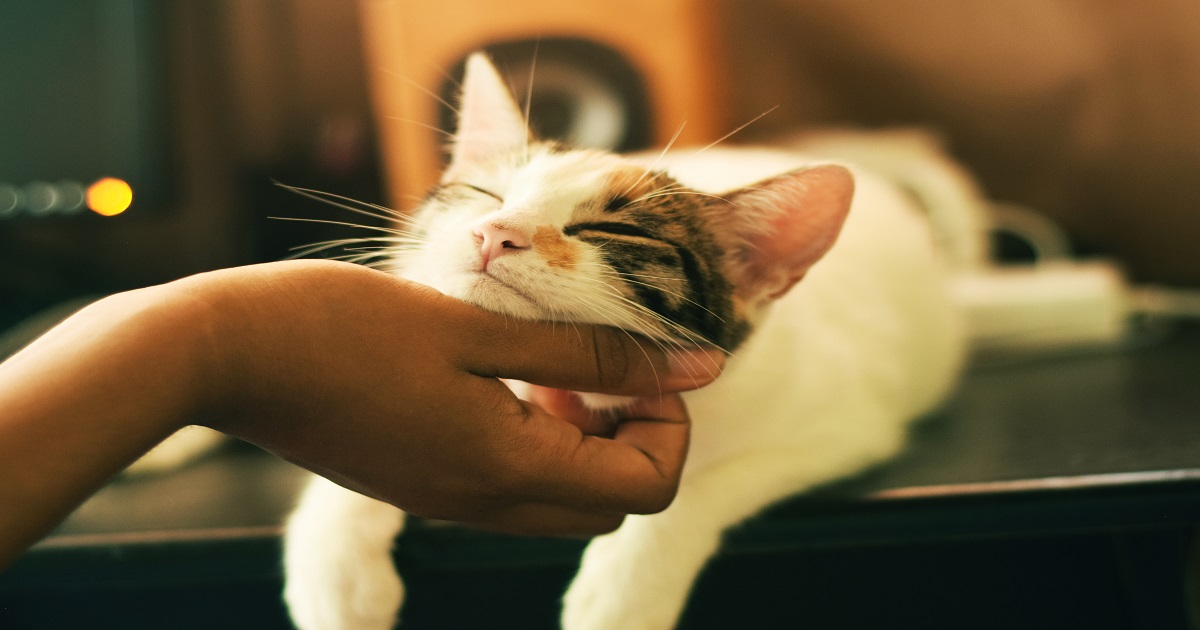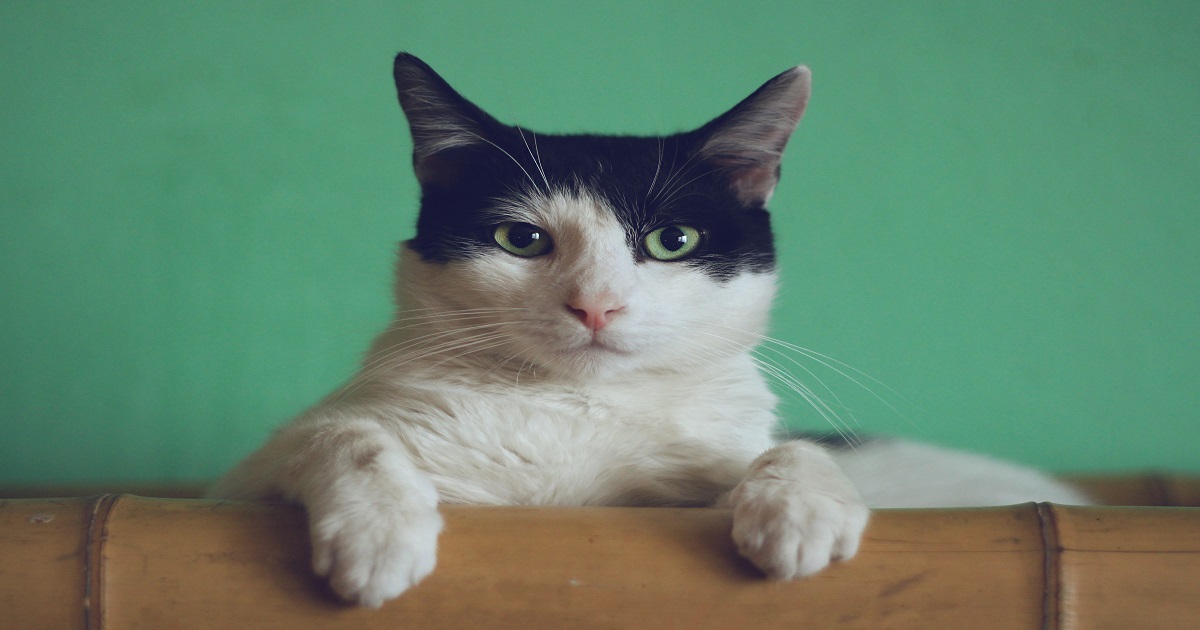Unlocking the Secrets of Cat Communication: Vocalizations and Body Language | WhizzyCat.com
Discover the fascinating world of cat communication as we delve into their vocalizations and body language. Cats have unique ways of expressing their needs and emotions without words. By understanding their meows, purrs, hisses, growls, and yowls, along with subtle cues in their tail movements, ear positions, eye dilation, and posture, we can establish a stronger bond with our feline friends. In this comprehensive guide by WhizzyCat.com, we explore the depths of cat communication and reveal how decoding their signals can enhance our understanding and caregiving. Join us on this enlightening journey as we decipher the mysteries behind their vocalizations and uncover the silent language of their bodies.
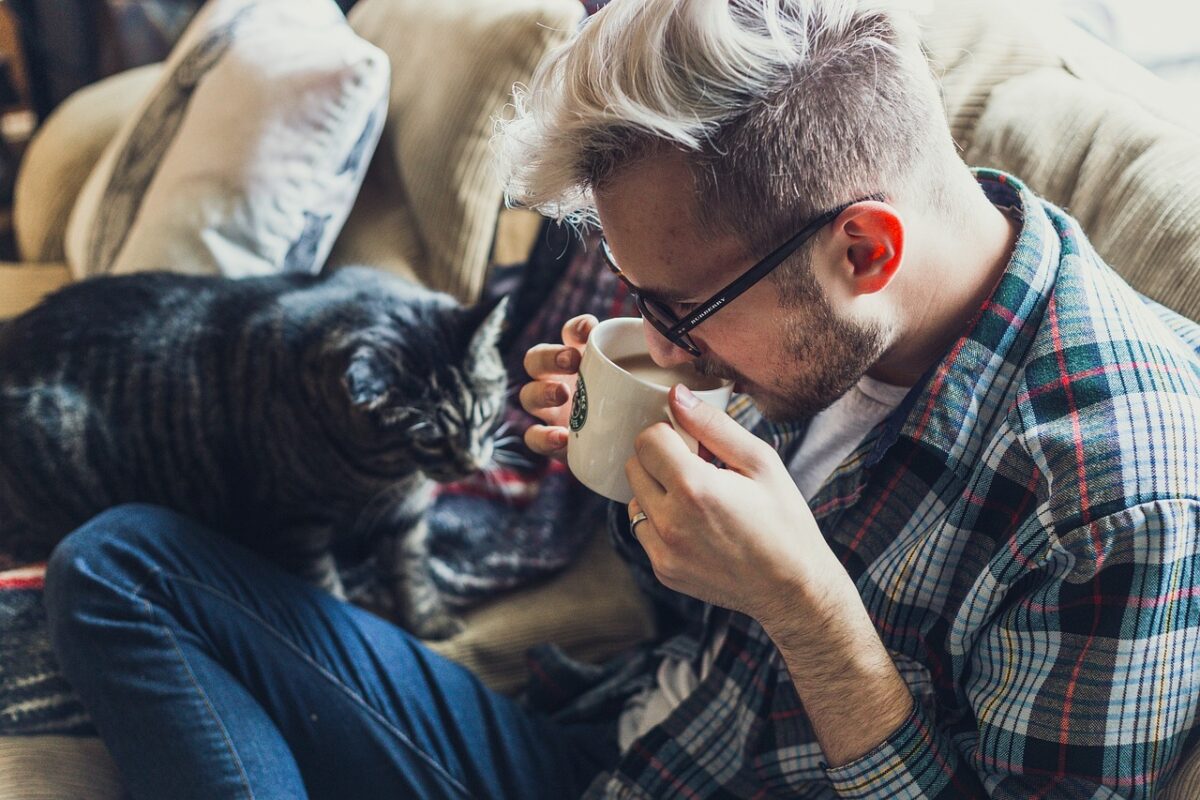
Section 1: Understanding the Meaning Behind Their Meows, Purrs, Hisses, and More | WhizzyCat.com
Meowing: Understanding the Nuances of Your Cat’s Meows for Effective Communication | WhizzyCat.com
Unlock the secrets hidden within your cat’s meows and establish a stronger bond by comprehending their subtle language. Delve into the various types of meows and their potential meanings to respond appropriately to your feline’s specific needs. From short greetings that express friendliness to meows that indicate hunger or seek attention, decoding your cat’s unique vocalizations is key to understanding their desires and emotions.
Purring: Deciphering the Enigmatic Language of Contentment and More | WhizzyCat.com
Uncover the mysteries surrounding your cat’s purr and deepen your connection with them. Discover the reasons behind why cats purr, including its association with contentment, relaxation, and social bonding. Gain insights into how purring can also convey anxiety or pain, shedding light on your cat’s emotional state. By unraveling the enigmatic language of purring, you can respond to your beloved feline companion’s needs and provide them with the care they require.
Hissing, Growling, and Yowling: Interpret the Vocal Warnings of Your Cat | WhizzyCat.com
Learn to decode the vocal warnings that your cat expresses through hissing, growling, and yowling. Gain an understanding of the circumstances in which cats exhibit these behaviors, such as feeling threatened or experiencing pain. Identify the signs of aggression, fear, or distress embedded within their vocalizations. By recognizing these warning signs, you can provide the necessary care, support, and reassurance to help your cat feel safe and secure. Strengthen the bond between you and your feline companion by being attentive to their vocal cues and ensuring their emotional well-being.
Section 2: Interpreting Cat Body Language: Insights from Tail Movements, Ear Positions, Eye Dilation, and Posture | WhizzyCat.com
Tail Movements: The Tale of Emotions
The tail of a cat serves as a fascinating indicator of their emotional state. Explore the significance of different tail positions and movements to decipher the hidden language they convey. An upright and confident tail signifies a happy and content cat, while a low and anxious tail may indicate fear or agitation. The swishing, twitching, or puffed-up tail can further reveal their emotions. By observing the subtle movements of their tails, you can gain valuable insights into your cat’s feelings and respond accordingly to provide comfort and reassurance.
Ear Positions: Eavesdropping on Mood
Cats communicate a wealth of information through the positioning of their ears. Discover how the forward-facing position signifies relaxation and attentiveness, indicating a content and friendly mood. On the other hand, flattened or backward ears may suggest fear or aggression, signaling a need for caution. Additionally, pay attention to ear flicking or twitching, as it can provide further clues about your cat’s mood and level of comfort. By observing their ear positions, you can better understand their emotional state and adjust your interactions accordingly.
Eye Dilation: Windows to the Soul
The eyes of a cat are truly windows to their soul, reflecting a range of emotions. Dilated or constricted pupils can reveal important insights into their current state. Wide dilated pupils often indicate excitement, fear, or arousal, while constricted pupils may signify relaxation or contentment. Additionally, the blinking patterns of your cat’s eyes can convey messages of trust and affection. By paying attention to their eye dilation and blinking, you can gain a deeper understanding of their emotional well-being and establish a stronger bond based on trust and comfort.
Posture and Position: The Silent Communicators
Mastering the art of interpreting your cat’s body posture and position allows you to decipher their intentions and emotional state. A relaxed and open posture with a gently curved back suggests contentment and comfort. On the other hand, a hunched posture or arched back may indicate fear or defensiveness. The play bow position signifies a desire for interaction and engagement, while a defensive “puffed-up” posture warns of aggression. By observing their posture and position, you can better understand your cat’s needs, feelings, and boundaries, fostering a harmonious and respectful relationship.
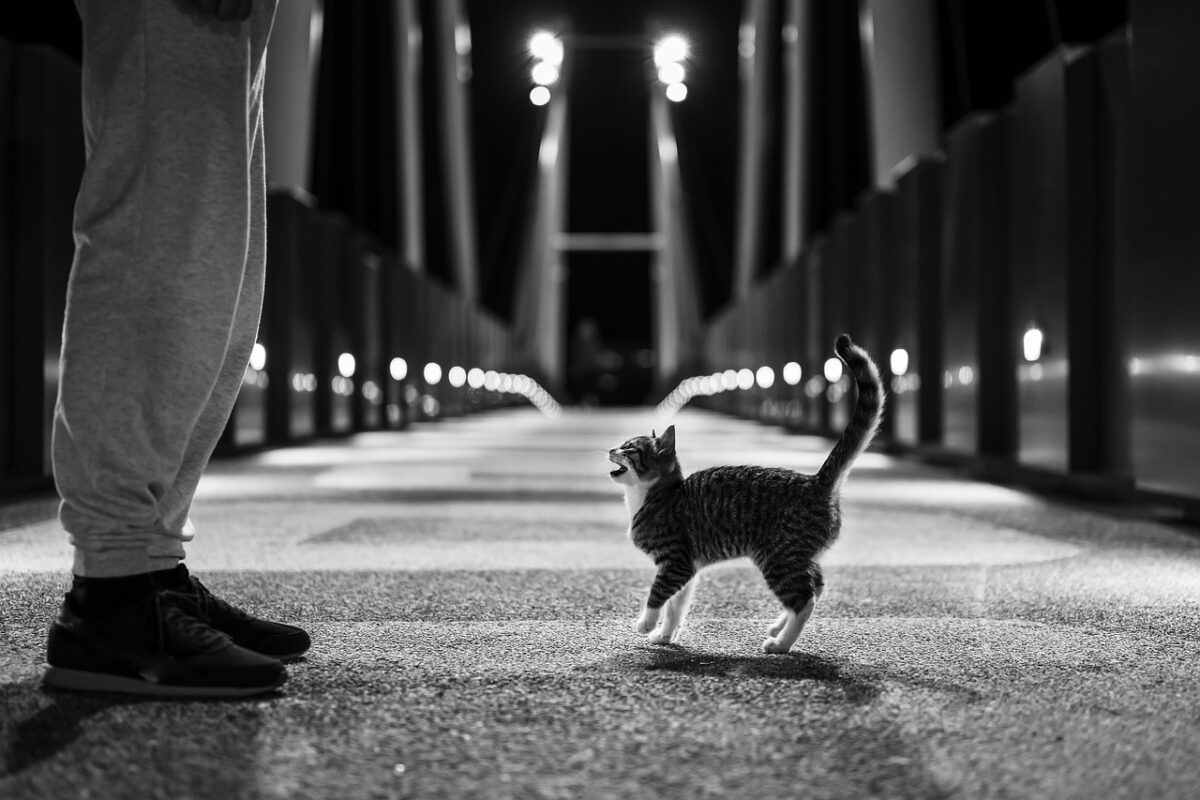
Deepen Your Connection: Cracking the Code of Cat Communication
By unraveling the mysteries of cat vocalizations and body language, you can develop a profound bond with your feline companion. Understand the meanings behind their meows, purrs, hisses, growls, and yowls, and decode the subtle cues in their tail movements, ear positions, eye dilation, and posture. Strengthen your understanding, respond appropriately to their needs, and create a harmonious environment for your cat’s well-being. Embark on this enlightening journey of deciphering their language and experience a deeper connection with your beloved furry friend.

